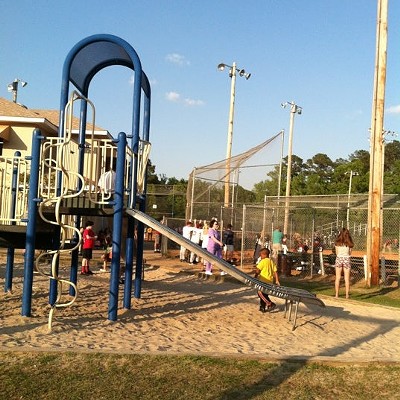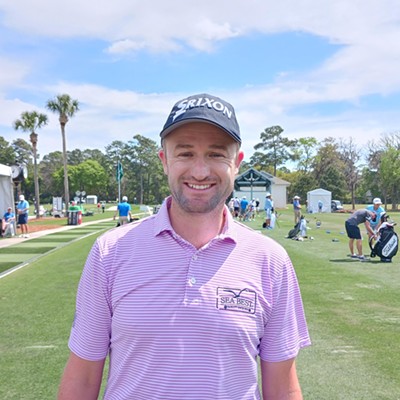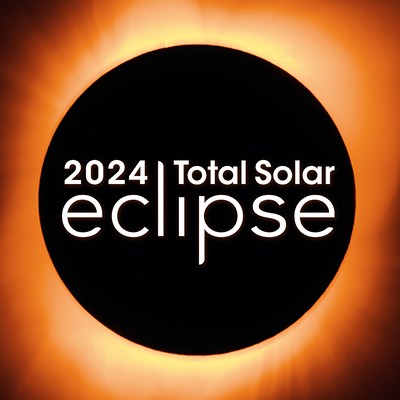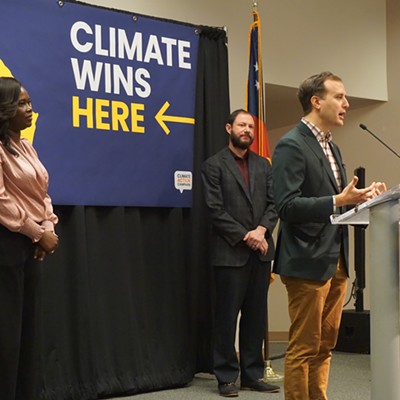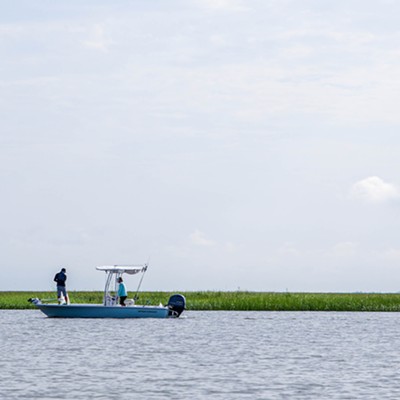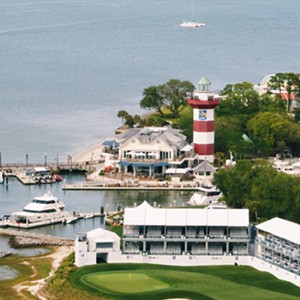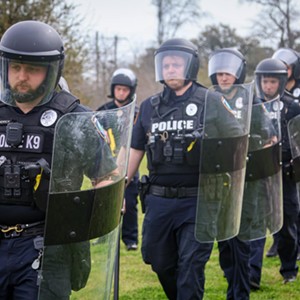Southern LNG’s plan to truck shipments of liquefied natural gas (LNG) from its facility on Elba Island to customers in northern Georgia along a route that includes DeRenne Avenue has drawn serious criticism and concern locally.
City officials, including the Mayor and Acting City Manager, environmental groups, and a handful of residents from neighborhoods adjacent to the shipping route have filed comments opposing Southern LNG’s trucking program application with the Federal Energy Regulatory Commission (FERC) in the last several weeks, since the issue was brought to the public’s attention.
The City of Savannah has also filed a motion to intervene in the hearings, giving them a voice, but not a vote, in proceedings that will decide whether FERC approves Southern LNG’s application to construct new truck loading facilities.
At issue is whether the tens of thousands of gallons of hazardous materials in each truck should be sent in such close proximity to residential neighborhoods and hospitals.
“Fears outweigh actual evidence of disasters, however, that doesn’t make it safe,” said a Congressional report from September 2003, outlining the risks of LNG facilities.
Although there is little or no chance of an explosion (LNG isn’t actually flammable until it vaporizes and mixes with oxygen), the material does pose some serious risks to the public were a catastrophe to occur.
On the other side of the coin, Southern cites the industry’s safety record and the securely designed, double–hulled tanker trucks as reason enough for everyone to rest easy knowing a disaster is highly improbable.
According to documents filed with FERC during hearings earlier this year about proposed LNG trucking in Freeport, Texas, of 21 LNG trucking accidents that resulted in a rollover during the last 33 years, only four resulted in the release of LNG, and only one leak resulted in a loss of more than twenty percent of the total cargo.
However, the possibility of a worst case scenario is bad enough for most folks to oppose the idea.
Potentially the biggest threat comes from what is known as a “pool fire.” In order to stay in liquid form, natural gas must be cryogenically cooled to negative 260 degrees Fahrenheit, however, if a spill were to occur, it would take time for the liquid to vaporize. If a pool of LNG forms near an ignition source, the vapors hovering above it will catch fire, feeding off the pool.
That fire would burn hotter and faster than oil or gasoline, and the thermal radiation would cause extensive damage well beyond the range of the actual spill. The fire also couldn’t be extinguished and would have to burn out, leaving emergency crews all but helpless.
Responding to such a situation, regardless of how unlikely it might be, is something officials from the city, local hospitals and emergency response crews would have liked to discuss with Southern LNG in order to ensure public safety. That conversation has yet to happen.
A city council workshop two weeks ago highlighted Southern LNG’s failure to reach out to stakeholders, including local residents, regarding the potential shipping route, and it is that exclusion, which some of the opposition attributes to malfeasance and others to ignorance, that was kindling for the fiery response.
The company is also going back on an agreement reached with the city nearly a decade ago that LNG would not be shipped through city streets.
Based on environmental and safety concerns, the placement of LNG storage and shipping facilities has been controversial in communities around the country, often including protests and public standoffs.
By comparison, the El Paso Corporation, a parent company of Southern LNG, has had it easy here in Savannah since they re–opened the Elba Island facility in 2001 after two decades of inactivity.
During negotiations with the City of Savannah back at the turn of the millennium, the company gave its assurances that no LNG would be shipped through the streets of Savannah, and would be shipped exclusively via pipeline to customers north and west of here.
“This is a major change to their operations,” wrote Acting City Manager Rochelle Small–Toney in a memo two weeks ago. “When the El Paso Corporation re–commissioned Elba Island in 2001, the City was assured...that no LNG shipments would be made using the streets of Savannah.”
In a signed memo dated June 20, 2001 from former City Manager Michael Brown to the Mayor and council, that assurance was outlined in no vague terms.
“No LNG shipments will be made on the streets of Savannah,” he wrote. “All LNG shipments to their customers will be made via pipeline or LNG transport ships.”
Those were different times apparently, and an emerging market for compressed natural gas (CNG) to replace diesel as a cleaner burning alternative for tractor trailers and public transportation has lured Southern LNG — which company President Bruce Hughes describes as “a start–up” even though it’s owned by El Paso and Atlanta Gas Light (two of the largest natural gas providers in the southeast) — to test the merit of the agreement from 9 years earlier.
Despite the failure to engage local stakeholders, Southern LNG has followed the rule of law at the federal level, and some public issues found locally may stem from confusion between expectation and obligation.
The company has dotted ‘i’s and crossed ‘t’s for its application to FERC, including sending letters to leaders of Native American tribes and historical preservation groups to ensure no culturally significant sites will be disturbed by the construction on about one acre of the 780 El Paso owns on Elba.
Whether contact with local government was required or not, Southern LNG’s application gives the impression that the company has already engaged locals in the process, particularly regarding safety and emergency response.
“Southern LNG endeavors to include landowners, government agencies, and others in the early planning stages of the project,” says Southern LNG’s application to FERC filed on August 4. “Federal, state, and local agencies were given the opportunity to comment on the project during the planning stages.”
Although the company mailed an invitation to city officials inviting them to an Open House event at the end of August, no personal contact was made before September 1, when Southern LNG’s President requested to address the City Council workshop Sept. 8.
The Coastal Group of the Georgia Sierra Club also took issue with Southern LNG’s use of the open house as its lone public hearing. In comments submitted to FERC, a representative wrote, “This meeting hardly passes for an adequate attempt to inform the public about this proposal or to permit public response.”
Reading through several hundred pages of materials submitted by Southern LNG to FERC, the impression is given that officials may not have considered the impacts (or public backlash) of shipping hazardous cargo through a heavily congested corridor bounded by hospitals and neighborhoods.
In the traffic study conducted by Thomas & Hutton that outlined potential routing for the LNG trucks, a vast majority of the 70 pages of documents is spent weighing the necessity of a stop light at the intersection of Elba Island Road and the Islands Expressway, discussing traffic flow along East President Street, and assessing the merit of installing a turning lane.
One of the few mentions of the DeRenne corridor is a GDOT collision analysis that finds DeRenne has the second highest rate of collisions per 100 million vehicle miles of any area mentioned in the study. The upside is that the number of collisions between the Truman and Lynes Parkway has decreased over the last two years.
Although that report deals strictly with traffic flow and infrastructure, the application itself makes no reference to potential impacts of residents along DeRenne or other corridors. Southern LNG submitted that “there are no affected landowners” by the trucking program, possibly because the application deals strictly with changes on Elba.
As contentious as the truck route is, it’s actually the one component of the proposed project that isn’t regulated by FERC. Southern LNG’s application deals strictly with the changes to the Elba facility itself.
“We have regulatory authority over where the facility will be sited,” says Tamara Young–Allen from FERC’s Media Relations Office. “The route itself is not under FERC’s jurisdiction.”
However, because the agency recognizes that application approval stands between Southern LNG’s trucking program and the public, comments submitted by the public regarding the potential route will be considered in FERC’s environmental assessment report.
“We do know that is a concern to people,” Young–Allen says. “We take in public comments and we take all those things into consideration before a decision is made.”
Public comments can be submitted at www.ferc.gov (click on Documents and Filings, then “eComments”). The next round of public comments closes Oct. 13.



